The key to the human race’s future may be right beneath our feet. It sounds bizarre, but fungi better known as mushrooms can help solve many of society’s greatest challenges, from cleaning up the environment and living more sustainability to colonising other planets.
Picture: Tony Hisgett / Flickr
Threaded into nearly every square inch of the ground are tiny, biological wires called mycelia. They’re the raw, exposed nervous system of the mushrooms that hold the planet together. When your feet press against the ground, or when it rains, or when a tree falls over, the fungal network responds, streaming chemical data in all directions and altering its growth and behaviour accordingly. Crusading mycologist Paul Stamets calls mycelia the “neurological network of nature,” and a “biomolecular superhighway.” He likens this fungal network to the human nervous system and the structure of the Universe itself.
To some, Stamets’s description of fungi may sound uncomfortably metaphysical. But he’s right that, much like a nervous system, fungal networks have been managing Earth’s ecosystems for eons. And by learning to harness these astounding organisms, we can build ourselves a stronger and more sustainable world.
Nature’s Digestive System
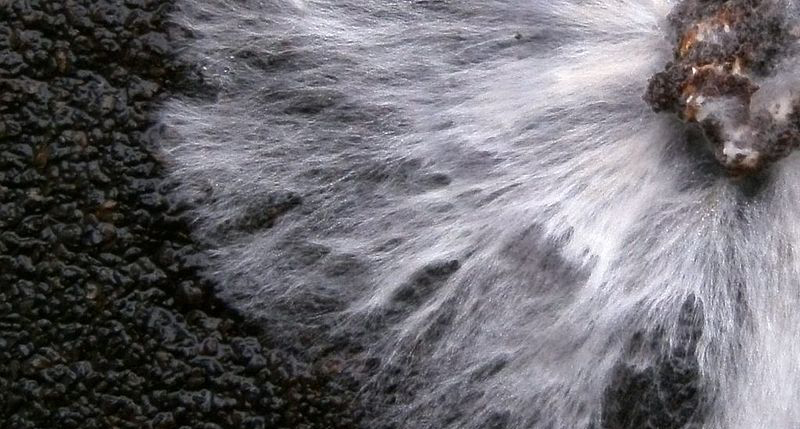
Oyster mushroom mycelia. Picture: Wikimedia
To understand why mushrooms are so crucial to Earth’s ecosystems, we need to start with their lifestyle. Fungi are nature’s decomposers — the interface organisms between life and death. They spend most of their time unseen and underground, ripping apart the tissues of dead plants and animals molecule by molecule. If you’ve ever seen pearly white, cobweb-like stuff covering a log, you’ve witnessed a fungal feasting frenzy. As mycelia chew through the soil, they use their microscopic slenderness to unlock nutrients that plant roots can’t access. They also sense their environment and relay a constant stream of data throughout their network, which the fungus uses to direct its growth.
In this manner, fungal mycelia can snake across a landscape — moving up to several inches a day, with no prescribed body plan — more or less indefinitely. (Small wonder, then, that the largest organism on Earth is a 2.4-mile-across fungus in eastern Oregon.) They require only water, nutrients, and a steady supply of carbon to keep building forward. Saprotrophic fungi mine their carbon from the soil, by breaking down sugary cellulose and tough, woody lignin. Mycorrhizal fungi barter with plants, trading nutrients for sugar by bonding their mycelium with root systems. This relationship — between fungal mycelia and plant roots — is one of the most important symbioses on Earth. Most trees and other plants would never reach maturity if their fungal partners weren’t supplying them with nitrogen and other critical nutrients.

Root tips coated in fungal mycelia. Image: Wikimedia
To get a sense of just how strange fungal metabolism is, imagine if, every time you got hungry, you could tell your stomach to go to Burger King to eat a meal on your behalf. Such is the nature of fungal feeding. The actual work of decomposing the Earth is not accomplished by the fungus directly, but by a soup of extracellular digestive enzymes, which rove around the soil as independent agents, searching for molecules to decompose. By sending off its enzymatic minions to digest the world around it, the fungus remains constantly bathed in all the resources it needs to grow.
For decomposers, no two lunches are ever the same. That’s why fungi have evolved a variety of enzymes, which can be expressed in different situations. A fungus worming its way through a log will secrete mostly wood-digesting enzymes, while a mushroom chowing down on a dead beetle releases a mixture of enzymes that break down protein, carbs, and chitin (the molecular building block of insect exoskeletons). To access as much of planet’s organic energy as possible, fungi have gotten really, really good at breaking down just about everything.
And that’s exactly why we can use mushrooms to clean up the planet.
Saving the Earth
In 2011, a group of Yale undergrads on a field expedition to the Ecuadorian Amazon stumbled upon something extraordinary: Pestalotiopsis microspora, a rainforest fungus with a healthy appetite for polyurethane, the plastic found in everything from garden hoses to shoes to car seats. Once polyurethane enters landfills, it sits there for generations; if our trash compactors were also filled with Pestalotiopsis, it might be a very different story.
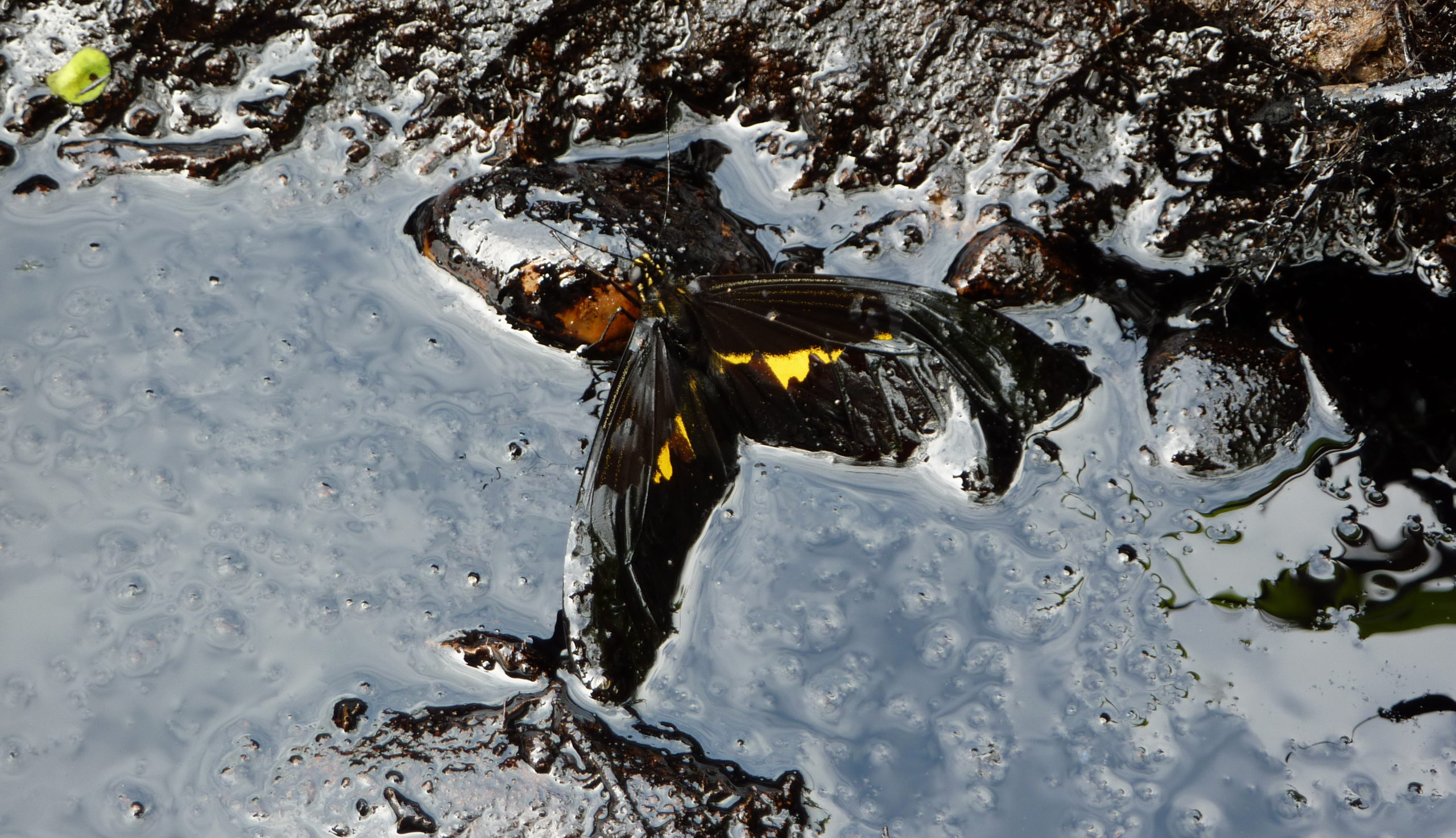
Picture: Amazon Mycorenewal Project
The discovery of Pestalotiopsis is not an isolated case. Scattered across the world, mycologists have identified mushrooms that can replace their usual woody diet with more exotic snacks like petroleum. As Stamets outlines in his mushroom manifesto Mycelium Running, there are fungi that can soak up toxic heavy metals — including lead, arsenic and mercury — with no apparent side effects. There are even mushrooms that will feast on radioactive waste.
All of this goes back to fungal ecology. Mushrooms evolved to fill a very specific ecological role — that of our planet’s digestive system. Now, some scientists want to use fungal digestion to our advantage, and train mushrooms to clean up our environmental messes. Stamets is involved with numerous such “mycoremeditation” efforts, including one that’s using mushrooms to clean up the Deepwater Horizon spill, and another that’s investigating whether radiation-loving fungi can help remediate Fukushima.
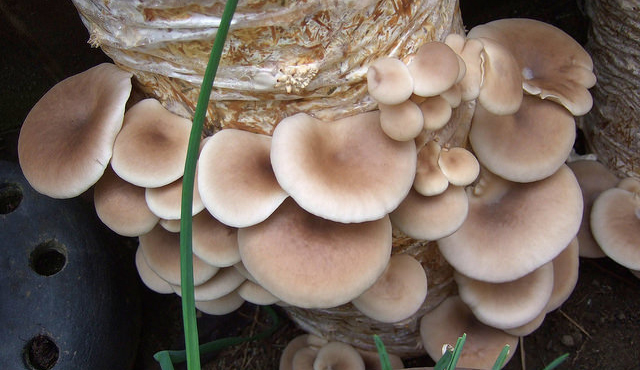
Oyster mushrooms, one of the most promising mycoremediators. Picture: Wendell Smith / Flickr
Another leader in the mycoremediation movement is Tradd Cotter, whose company Mushroom Mountain has become a hub for mushroom research and cultivation. Cotter is currently overseeing mycoremediation projects in both Haiti and the Alberta Tar Sands. He’s also advising a group of mycologists in northeast Ecuador who want to use fungi to clean up the worst oil disaster on the planet, a patch of rainforest where the oil company Texaco (now Chevron) spent nearly thirty years dumping toxic petroleum waste directly onto the ground. This initiative, a collaboration between the Amazon Mycorenewal Project and a local university, seeks to build an Amazonian hub for mushroom cultivation, distribution, and education. In the future, the victims of this environmental disaster might be growing mushrooms for their simultaneous health benefits (we haven’t even talked about how good these things are at fighting cancer) and bioremediation abilities.
Man-made pollution aside, mushrooms also happen to be really good at scrubbing harmful bacteria and viruses out of their environment. Many of our most valuable antibiotics, including penicillin, come from the soil and from fungi. In a TED Talk on how mushrooms can save the world, Stamets describes an experiment in which he placed mycelium-filled burlap sacs downstream from a factory that was spewing E.coli–laden runoff. Within 48 hours, the mushrooms had reduced the number of harmful, coliform bacteria in the water more than ten-thousand times over. He’s since partnered with the EPA to develop bacteria-eating stormwater filters that can be implemented in cities worldwide.
Building the Future
The notion that we can use fungus to mop up our nastiest environmental messes is exciting, but every day, we continue to build our world up with materials that pollute and don’t degrade. What if we could begin phasing out environmentally destructive plastics, foams, and synthetic building materials? With fungi at our side, this might actually be possible. Mycelia — incredibly resilient and naturally biodegradable as it is — may, quite literally, build our future.
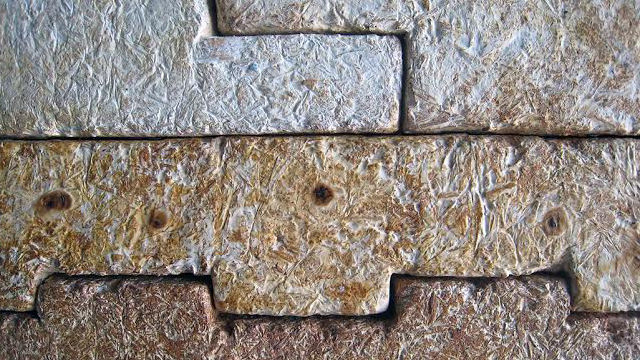
Mushroom bricks are one of the toughest materials on the planet. Picture: MycoWorks
Before you recoil at the idea of a house made from mushrooms, you’ll want to check out the work of mycologist and designer Phil Ross, who’s been turning mushrooms into beautiful structures for over 20 years. A self-styled “craft mycologist”, Ross has discovered that, given the proper substrate and growth conditions, fungal mycelia can be assembled into nearly any shape and density under the sun.
For Ross, building with mushrooms started as an artistic hobby. He grew easy chairs, stools, tables and baskets, all by filling a mould with sawdust and inoculating it with mycelia. But it wasn’t until he started growing interlocking bricks and building entire structures from mushroom mycelia that Ross realised he’d stumbled onto something big.
“These bricks can withstand incredible compression and shear forces,” Eddie Pavlu, CEO of MycoWorks, told me over the phone. “If you put two of them in contact while the mycelium is still alive, they fuse together. We’re finding that the bond between them tends to be as strong as the brick itself.”

Phil Ross’s ‘Mycotectural Alpha’ teahouse at Germany’s Kunsthalle Düsseldorf, 2009. Picture: MycoWorks
MycoWorks, founded by Ross, Pavlu, and Sophia Wang in 2013, is now working to turn this unique art form into a scalable industrial product. Through partnerships with private industry, government and academia, the team is developing and refining mycelium-based materials that may one day ship our computers and line our buildings.
Many man-made building materials, include synthetic wood fibreboard and foam, are manufactured using toxic chemicals. Throughout their lifetime, fibreboards and plastics emit small levels of volatile organic compounds (VOCs), a class of pollutants which are associated with cancer and other health risks. “Even if you burn fibreboard, the ash is treated as hazardous waste,” Pavlu said. “Mycelium-based materials create no toxic byproducts and emit no VOCs.”
Mushroom bricks are not only cleaner than their synthetic counterparts, their material properties are arguably much better. Imagine: A substance soft enough that your fingernail can make an impression, light enough to float on water, and tough enough to absorb a bullet. Imagine it’s also a powerful heat and sound insulator, and can withstand a flamethrower and a sledgehammer. I could go on, but you should probably just check out this incredible video, put together by MycoWorks and Mazda, which opens with a guy beating a piece of metal tubing flat with a mushroom brick (the brick, for its part, comes away more or less unscathed):

If that’s not impressive enough, try this on for size: All it takes to grow this incredible material are agricultural waste products that we literally have no other use for. Take, for instance, pistachio hulls.
“Pistachio hulls are a great example of a waste stream that’s simply not being used,” Pavlu said. “Millions of pounds of them are produced as a byproduct of harvesting each year, and there’s really else nothing that can be done with them.”
The same could be said for rice hulls, corn husks, or nearly any other form of plant waste imaginable. That includes the millions of pounds of waste now exiting biofuel plants every year. MycoWorks has recently partnered with a large ethanol manufacturer to determine whether secondary biowaste — the stuff left over after the ethanol conversion process — can be a viable source of feedstock for mushroom bricks.
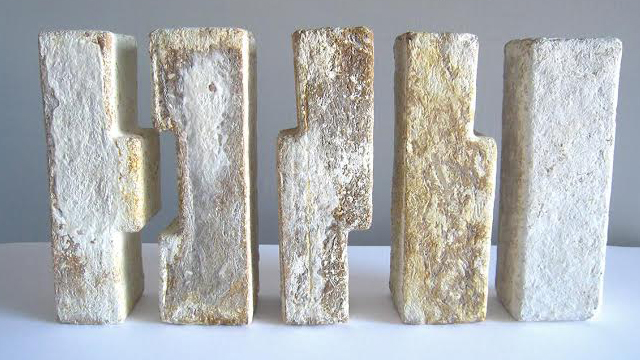
Picture: MycoWorks
To the MycoWorks team, the uses for mycelium are practically endless — houses, batteries, cars, spaceships. The biggest hurdle to the widespread adoption of fungal materials may, in fact, be us.
“When you say fungus, a lot of people immediately think of mould, or something that grows between your toes,” Pavlu said. “Fungi have definitely got a bad rap.”
But even when a person is initially repulsed at the idea of living in a mushroom house, Pavlu’s optimistic. “Once we start describing what we’re doing, they become fascinated,” he said.
How could you not be?
Terraforming Worlds
Futurists, science fiction writers, and most people who think about long-term sustainability will agree: To survive, the human race eventually has to become a cosmic species. Whether it’s on Mars or a distant planet, we’re probably going to need to terraform our new home to make it a bit more Earth-like. Once again, mushrooms might be up to the task.

Picture: Wikimedia
Before you conclude that I’ve finally gone off the deep end, consider this: F ungi have already proven themselves resistant to the hellish conditions of outer space. In a series of studies published last month in the International Journal of Astrobiology, researchers tested the ability of different life forms to withstand space exposure by strapping them to the outside of the International Space Station. After 22 months awash in DNA-shattering UV radiation, with no food or water, spores of the fungi Aspergillus and Trichoderma remained alive.
If we’re talking about settling down on a lifeless planet with a thin atmosphere, fungi might be some of the only organisms that can survive the exposure.
But more important than their ability to survive is the possibility that fungi could actually make our new home more habitable. I’ll admit it’s a very speculative idea, but mushrooms have already demonstrated their terraforming prowess here on Earth. When fungi marched onto the land roughly a billion years ago, they released acids and enzymes, crumbling the hard, rocky surface and forming the first thin soils. This initial layer of organic matter and nutrients allowed plant and animal life to subsequently gain a foothold.
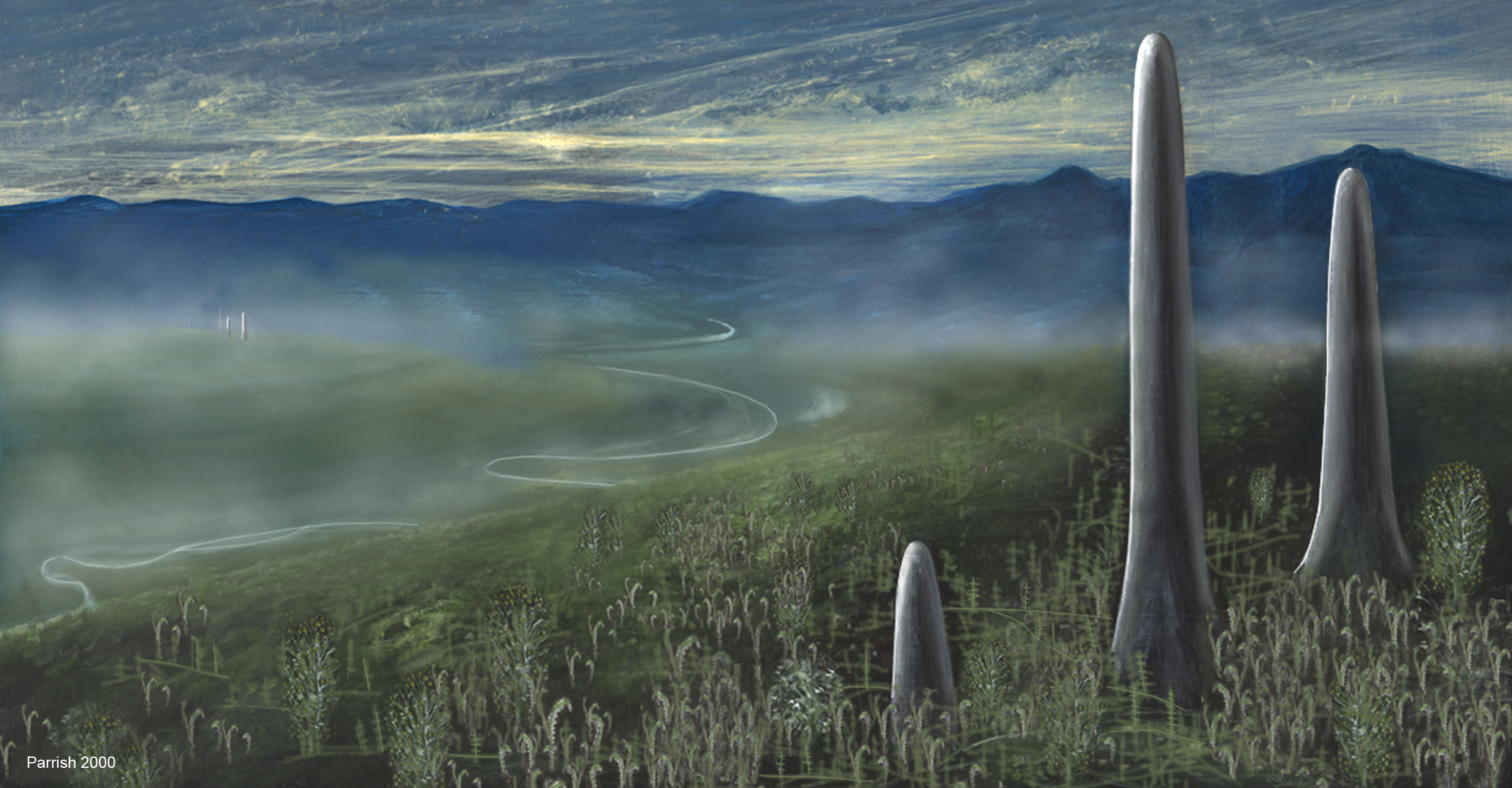
Artist’s rendering of a prototaxite-dominated landscape. Picture: Mary Parrish via University of Chicago
And long before plants came to dominate the land, massive mushrooms ruled the Earth. Prototaxites, a fungus that lived from 420 to 350 million years ago, reached heights of up to 24 feet, dotting the world with its towering spires. By the end of the Devonian period, Prototaxites had gone extinct, and vascular plants were on the rise. But mushrooms didn’t disappear — they retreated underground, forming associations with plant roots and helping their greener cousins take over the Earth.
Since they first crawled onto the ancient Earth’s inhospitable surface, fungi have never left us. Following nearly every devastating mass extinction, mushrooms have inherited the Earth. At the end of the Permian period some 250 million years ago, climate change and catastrophic events precipitated the extinction of over 90 per cent of all species. Fungi, the fossil record tells us, feasted on the death of Earth’s ecosystems. Time and time again, mushrooms have lived through the apocalypse, recycled the dead, and helped rebuild the planet.

Image: Tom Sieprath / Flickr
If anything is going to help future humans make a cold and lifeless world a little more terrestrial, it will be the incredible, alien life forms that have been terraforming our planet for eons.
